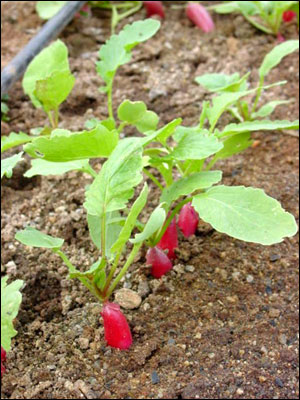
by Julie McConnell | Nov 2, 2016

Radish. Photo credit: UF/IFAS Gardening Solutions
If you’ve considered starting a vegetable garden but are intimidated by the idea, this time of year is a great time to give radishes a try. Radishes are a cool season crop and will grow well in the mild winter climate of North Florida. The ease of growing this cool season vegetable also make them an ideal starter plant to get kids interested in gardening.
Radishes germinate with soil temperatures of 45-85⁰F and grow well when temperatures average 50-65⁰F, so October to November is a good time to plant in the fall. They develop quickly and are ready to harvest in as little as 3-4 weeks, so the quick results keep children interested.
Don’t have a garden area setup yet? No problem, grow radishes in a container! They take up very little space both in width and depth and can be easily grown in a modest sized pot. Radish seeds are small so should be planted very shallow, only cover with about ¼” of soil. Space plants about 6 inches apart and stagger planting dates through the fall and winter so that you can harvest as needed and still have a new crop coming on. For best flavor and texture, harvest when radish roots are ¾ inch diameter or less.
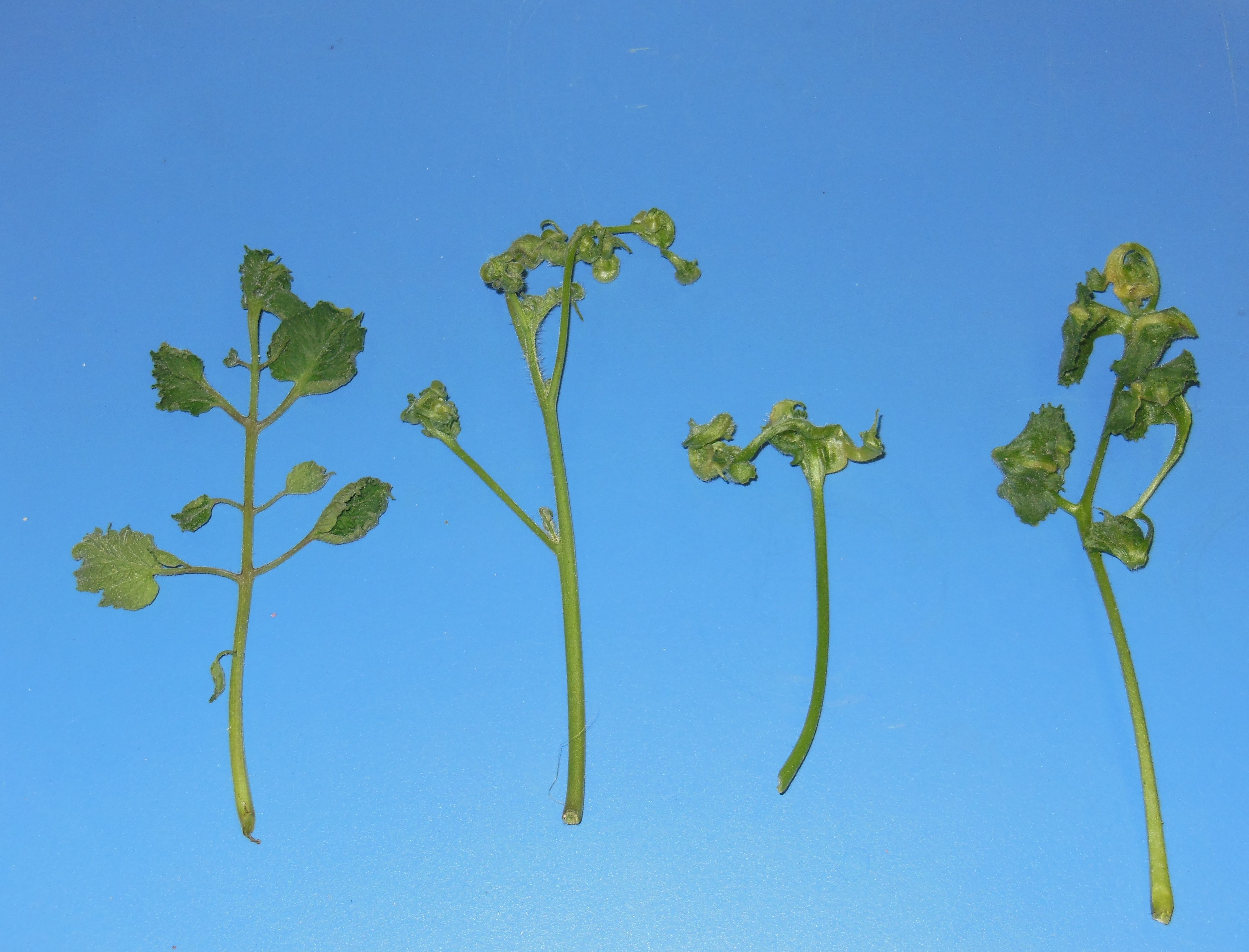
by Mark Tancig | May 24, 2016
Humans have used animal manures to fertilize food crops for thousands of years. Manures are an organic source of plant nutrients and are often a waste byproduct that must be properly managed when raising animals. Today, many farmers and backyard gardeners continue to use animal manures to provide nutrition to their crops. However, a recent experience at our local extension office brought to our attention the need to know what else, besides nutrients, is in the manure used.
A local backyard gardener brought in samples of tomato plants that had strange new growth. She had purchased the tomato plants, along with other vegetable plants, from a local nursery. When she repotted the tomato plants into larger pots, she added horse manure from her own horses to the soil mix. She then noticed this strange growth on the tomatoes, but not in the other vegetable plants that were repotted without adding horse manure. Herbicide damage was one of the first potential causes we suggested, since the new growth was twisted and distorted, a common symptom of plants that have been sprayed by herbicides. The gardener was sure she had not sprayed any herbicides near these plants, or in the pasture where she keeps her horses.
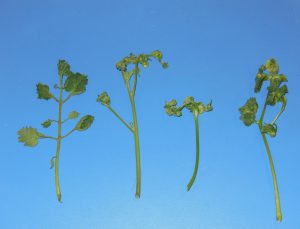
Herbicide damaged tomato plants. Photo by: Mark Tancig
Photos of the tomato plants were shared with other NW District agents and an agriculture agent with livestock and hay producer experience had the probable answer – herbicide damage due to the horses being fed hay from a hayfield that was treated with a particular herbicide. Interestingly, this agent also had experience with these symptoms after their neighbor had similar issues using manure to fertilize the garden.
Herbicides with the active ingredients picloram or aminopyralid are able to cause this kind of unexpected damage to many gardeners’ crops. Herbicides containing these active ingredients are used in hayfields to control broadleaf weeds. These herbicides are especially effective at controlling hard to manage weeds such as thistle, nightshade, and nettle. They also provide long-lasting weed control. Unfortunately, the persistence of these ingredients extends into the hay, and also persists in the manure and urine of animals who eat hay from treated fields. These ingredients pass through the animal unchanged and remain active as an herbicide. Since many vegetable crops are broadleaf plants, the herbicide’s ingredients cause injury.
So what can a farmer or backyard gardener do to prevent this problem? When purchasing hay for livestock, ask the seller if they know whether the hayfield has been treated with herbicides that contain either picloram or aminopyralid. Most herbicides are known by their common names, rather than their chemical name. If they give you a common name or brand name, the active ingredient can be obtained by contacting your local extension office. If the seller can’t tell you, then, as a precaution, do not use the manure to fertilize broadleaf vegetable crops. The same question should be asked if purchasing hay for mulch as well. Composting the manure or hay does not break down the active ingredient, and may even concentrate it.
While we continue to use animal manures to fertilize our crops as our ancestors did, it’s important to remember that many of the tools and products we use today are much more advanced. These advanced products require that we stay informed of all precautions, use them responsibly, and, in this case, inform end users of any precautions. Remember to always read and follow the label and ask questions. And if a science-based answer is what you’re looking for, your local extension office is a good place to go!
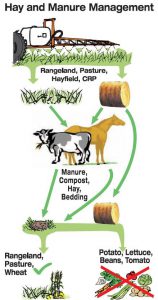
Warning from herbicide label.
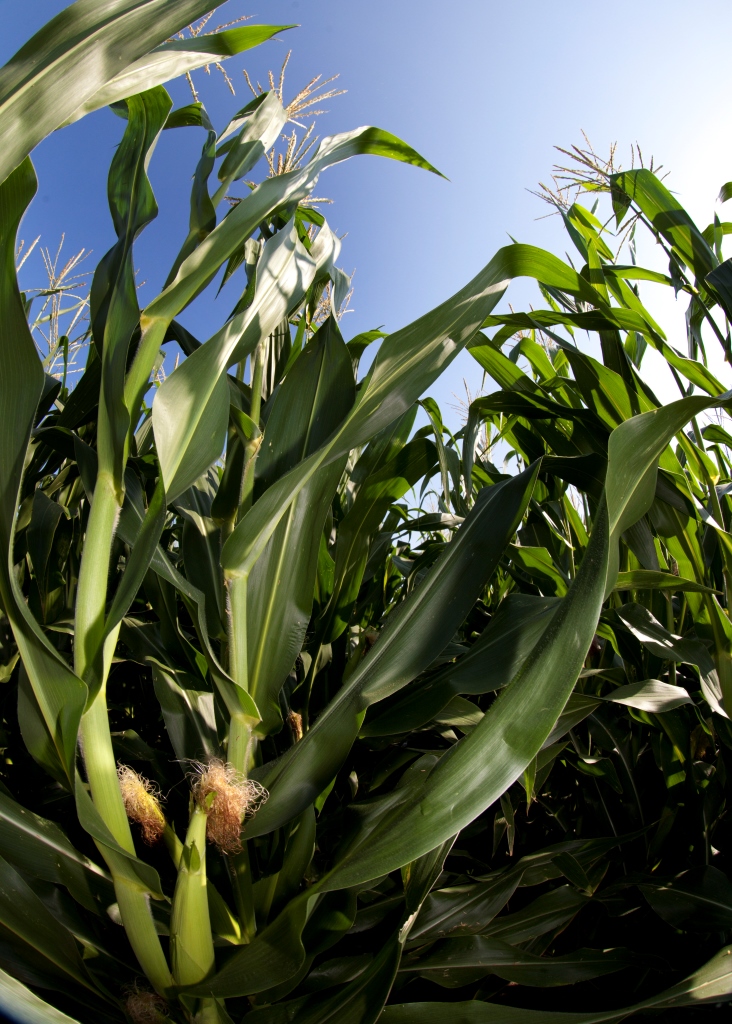
by Judy Biss | Feb 3, 2016

Corn tassels at the top provide the pollen needed to produce the perfect ear of corn on the stalk below. UF/IFAS Photo by Tyler Jones.
It won’t be long until row crops and vegetable gardens are planted and thriving once again next spring. A sometimes taken for granted, yet critical element of any prosperous crop is successful pollination. Most of us know what “text book” pollination means, but did you know in cucurbit plants, (squash, melon, pumpkin) at least 1,000 grains of pollen must be evenly deposited in each bloom to produce a uniform marketable fruit? Or, to grow our favorite summer delight, each watermelon flower must be visited by a honeybee a minimum of 8 times? And how about the fact that each silk in a corn flower is connected to one kernel on the ear of corn, and for the kernel to develop properly pollen must travel down the silk through a pollen tube to the waiting kernel? Add to these facts the dizzying variety of pollen and flowers, bloom times, pollination dynamics, weather conditions, plant growth, and availability of pollinator insects, then one can begin to see how amazing pollination is, and how critical it is to our food supply.
What are the basics of pollination?
The first step of fruit or vegetable reproduction takes place when flowers emerge. Plant flowers can be male, female, or perfect flowers. The male flowers produce pollen. The female flowers have ovaries which, when fertilized, become the fruit or vegetable. “Perfect” flowers have both male and female parts within a single flower. Most garden vegetables such as beans, peppers, and tomatoes have perfect flowers, whereas cucurbits like squash, pumpkins and watermelon, have separate male and female flowers on the same vine. For successful pollination to occur, the male pollen must reach the female ovaries in order for the fruit or vegetable to be produced.
Methods of Pollinating
Transfer of pollen to the plant ovaries for fruit and vegetable production, whether in the same “perfect” flower, or in another separate female flower, occurs in several ways. Some plants, like corn, depend on wind to transfer pollen to the silk, and ultimately ovaries, of the female flower. Other plants, like squash depend on the help of pollinators like insects to deliver the pollen to the ovaries. Plants that produce perfect flowers can self-pollinate, but still benefit from contact with pollinators. In small backyard gardens, many crops in the cucurbit family (squash, melons, etc.) or those that have separate male and female flowers, can be pollinated by the gardener by hand. In the absence of insect pollinators in dooryard gardens, hand pollination will increase yields.
The Importance of Bees
Obviously, in production agriculture, hand pollination of crops is not feasible, and although some crops are wind pollinated, most crops need insect or animal pollinators to accomplish the job. As we know, bees are one of the most important pollinating insects, and it is well documented that yields of many fruit and vegetable crops increase in both quality and quantity when pollinated by honey bees. According to the UF/IFAS publication Minimizing Honey Bee Exposure to Pesticides:
The Business of Pollination
Because they are so critical to increased quality and quantity yields, managed honey bee colonies are used across the country in a thriving contractual pollination industry. According to the UF/IFAS publication Sample Pollination agreement,
The business of pollination is crucial to the agricultural industry in the United States. In Florida, the major need for pollination is in fruit and vegetable production.
And according to the UF/IFAS publication Minimizing Honey Bee Exposure to Pesticides,
Rental of honey bee colonies for pollination purposes is a highly demanded service and a viable component of commercial beekeeping and agriculture. Bee colonies are moved extensively across the country for use in multiple crops every year. There are also over 3,000 registered beekeepers in Florida, managing a total of more than 400,000 honey bee colonies and producing between 10–20 million pounds of honey annually.
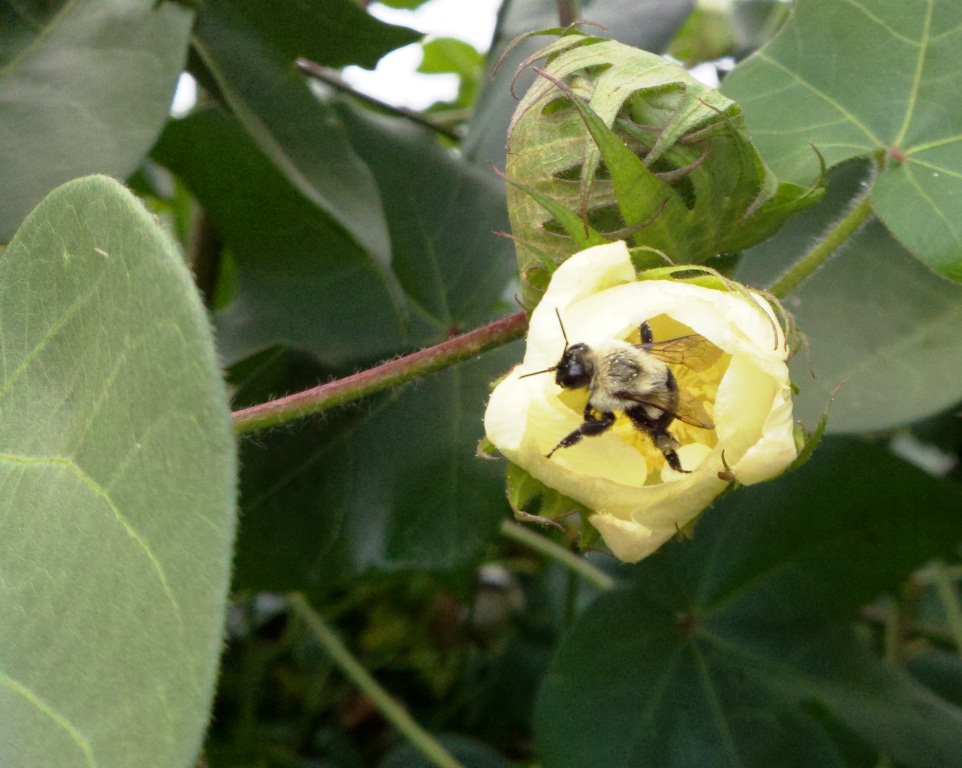
Cotton is largely self-pollinating, but attractive to bees. In some cotton varieties, pollination by bees can increase seed set per boll. Source: University of Georgia Pollination: Crop Pollination Requirements. Photo by Judy Biss
Crop Pollination Requirements
The dynamic of pollination is a fascinating and critical component of both dooryard and production agriculture. Research on plant health, varieties, growth, and potential, as well as research on honey bee colony health and management, all play a role in producing sustainable food yields. The University of Georgia has summarized pertinent literature related to common fruit and vegetable crop pollination requirements (Apple, Blueberry, Cantaloupe, Cucumber, Squash, Watermelon, Other Crops). This comprehensive resource provides the recommended number of beehives per acre for each crop, plus additional information on plant variety characteristics, and other useful information related to maximizing pollination and yield. Check it out: Pollination: Crop Pollination Requirements
So whether you have a dooryard garden or a large farm, it will benefit you to learn all there is to know about your crop’s pollination requirements to maximize yield and quality potential.
For more information on this topic, please see the following publications used as resources for this article:
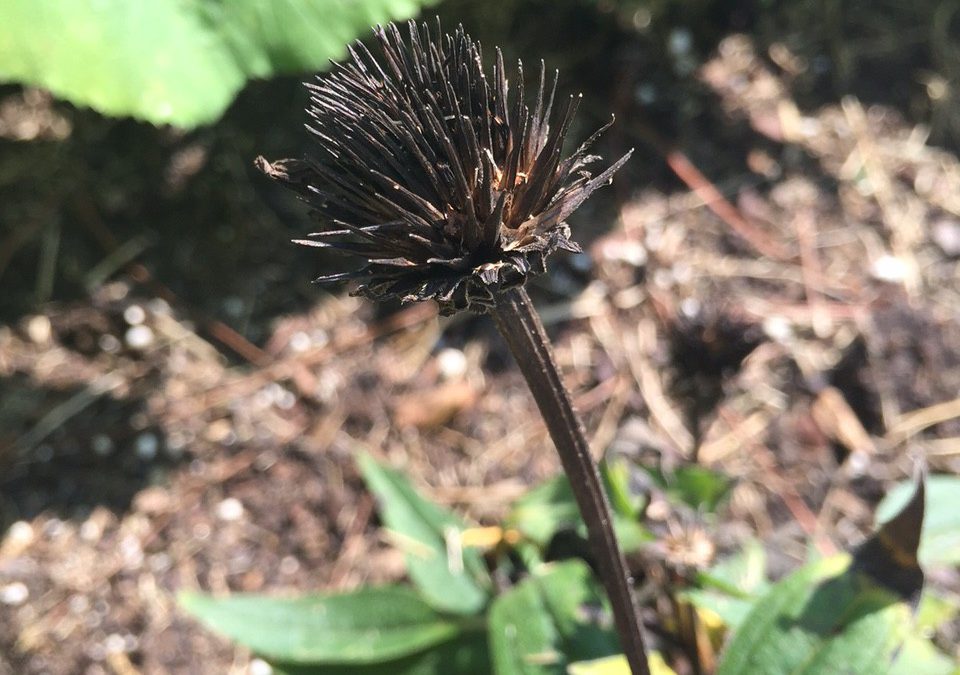
by Mary Salinas | Sep 9, 2015
You’ve grown some wonderful vegetables, annuals or perennials and you would like to save some of the seed from those plants to have for planting in the future. This is a great way to get more of the plants you know and love while saving on the expense of new plants. One exception are plants that are F1 hybrids; seeds from these plants will produce crops quite dissimilar to the parent.
First, you need to collect ripe seed from the desired plants. How do you know when the seeds are ripe and ready to harvest? The strategies for annuals/perennials and vegetable plants differ.
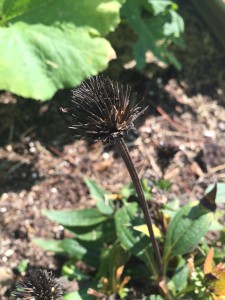
The ripe seedhead of a coneflower. Photo credit: Mary Derrick, UF/IFAS Extension.
For annuals and perennials that flower without making a fruit, wait until the flower has dried up and the seed head is brown and dead-looking. The seeds are then mature and ready to harvest. Take a look at the photo of the coneflower seedhead for reference. These seeds are already dry and can be put into an envelope and then into a sealed jar or plastic stage bag that contains a desiccant to absorb any excess moisture. There are a few options for desiccants: the little packets that come in vitamin bottles and purses to keep them dry, cornmeal or dried milk in bottom of the bag. Be sure to label your envelope with the date and name of your plant seeds. Store in the refrigerator.
When you are saving seed from a vegetable that has seeds inside it such as a tomato, pepper or squash, harvest the vegetable when it is ripe and ready to eat and scoop out the seeds and wash away all other plant parts from the seed. These seeds are very moist and if stored in this state, they will rot into a mess. You want to get the moisture content below about 8% for long term storage. There are several methods:
- If the humidity is low and the temperature high, (I know, those can be rare conditions for Florida) you can put the seeds in a single layer on a baking sheet in the shade to let them dry all day.
- Another option is to take that baking sheet with a single layer of seeds and put it in a 100° oven for 6 hours with the door open. It’s crucial to monitor your oven temperatures as those above 100° will kill the seeds.
Once the seeds are dried sufficiently, store them as described above for flower seeds. Your seeds can then last for several years.
For more information:
Seed Saving from Colorado State Extension
Saving Vegetable Seeds from University of Minnesota Extension
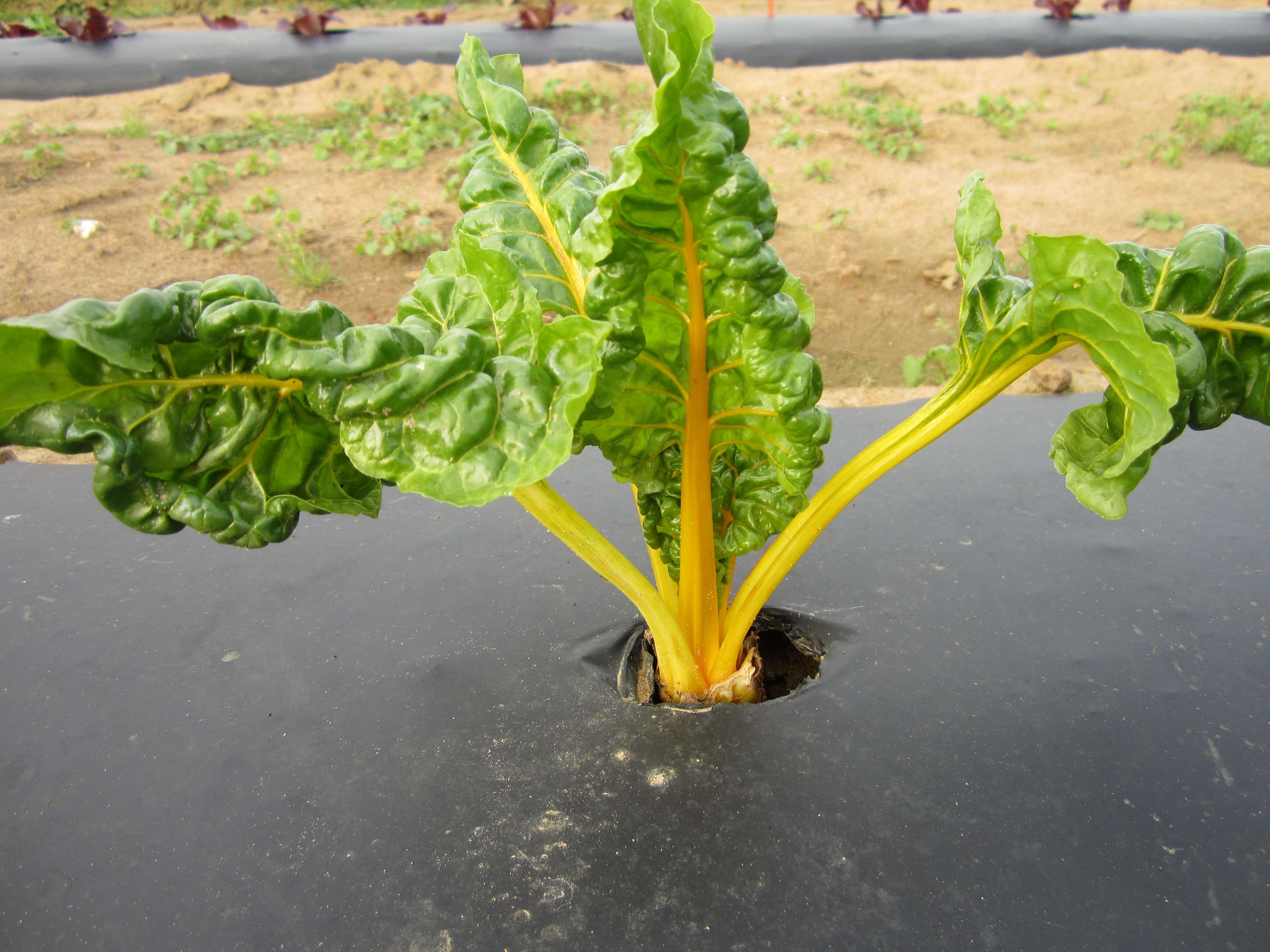
by Blake Thaxton | Aug 12, 2014
Color can make a landscape. Color highlights features of the landscape and draws the eye as a focal point itself. Spring color is dominated by lush new green growth, Summer brings on flowers of all kind, and fall brings the spectacular show of foliage.
[important]A new suggestion: use vegetable crops as fall color![/important]
Fall and winter vegetable crops for the panhandle of Florida bring a different hue of colors that can be utilized in the landscape. Let’s walk through a few that you may want to start seed for to brighten up your fall garden.
Swiss Chard
Swiss Chard brings several colors to our finger tips. Reds, Whites, Greens, and Yellows are all available from different varieties of these crops. Not only do they bring great color to the landscape but they also are sometimes referred to as the “Champagne” of greens. They can be directly seeded or transplanted and should be planted 6-12 inches apart.

Swiss Chard Varieties. photo credit – Blake Thaxton
Broccoli & Cauliflower
Broccoli brings a blue/green foliage and Cauliflower various colored heads. Both can bring great color to the landscape and allow for something delicious to eat in the very near future. Broccoli and Cauliflower transplants should be used for planting. Broccoli and cauliflower should be given plenty of room with approximately 24 inches between plants.
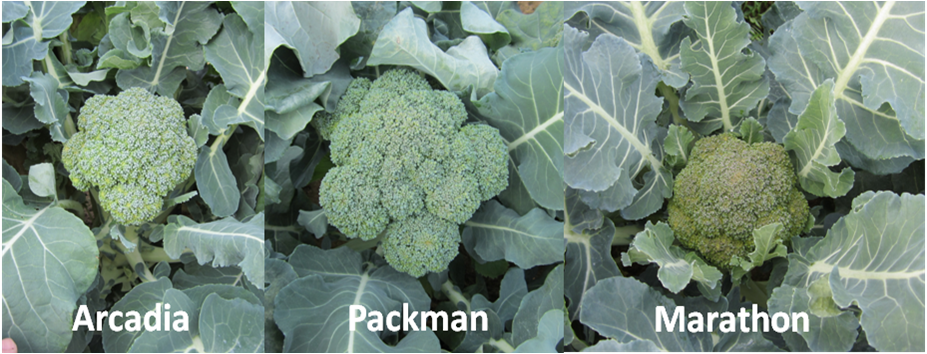
Broccoli Varieties. photo credit – Blake Thaxton
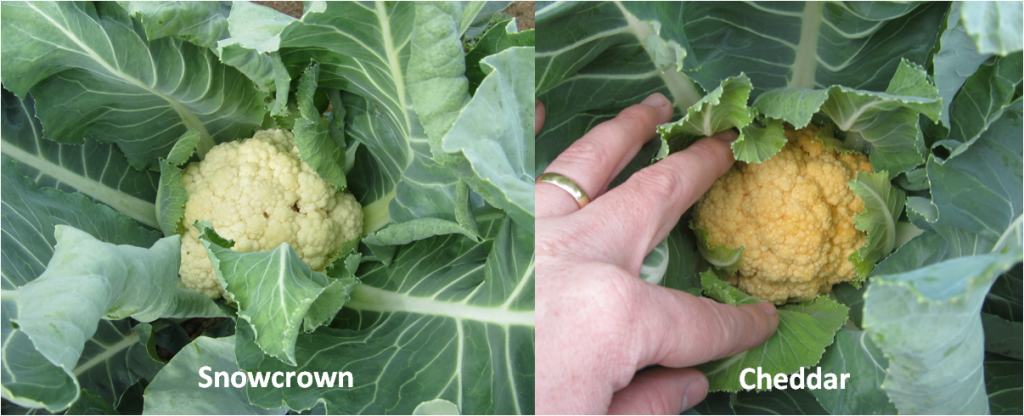
Cauliflower Varieties. photo credit – Blake Thaxton
There are many other crops to consider for fall color such as Lettuces, Cabbages, Kale, Etc. Comment below with other vegetable crops that can be used for fall color.













